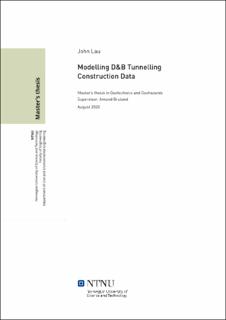| dc.description.abstract | Since its inception, the Norwegian Tunnelling Contract System (NoTCoS) has confided in theoretical and empirical studies; and leaned upon industry experience and intuition, to derive its time capacity values. However- as we zip through this digital-age- it has become clear, that digitisation is not slowing down; and continues to engulf all things. The push- and the scramble for data-driven solutions; and for automation, is inevitable across all industries today. Norwegian drill and blast (D&B) tunnelling is no exception.
In this study, preliminary investigations were performed to identify useful modelling techniques for converting D&B construction data into reliable time capacity values. Supplementary to this, are two secondary objectives. The first, was to highlight the current obstacles (such as gaps in the research, and insufficient data) impeding successful data-based modelling. While the second was to propose realistic reform to the current data collection process: for effective predictive analysis in the future.
Overall, the study conducted here alluded to the non-negative least squares (NNLS) algorithm as a useful predictive tool for extracting D&B time capacity values from construction data. However- its success is utterly dependent on a strict set of conditions: if unmet, the consequences are quickly hampering. | |
